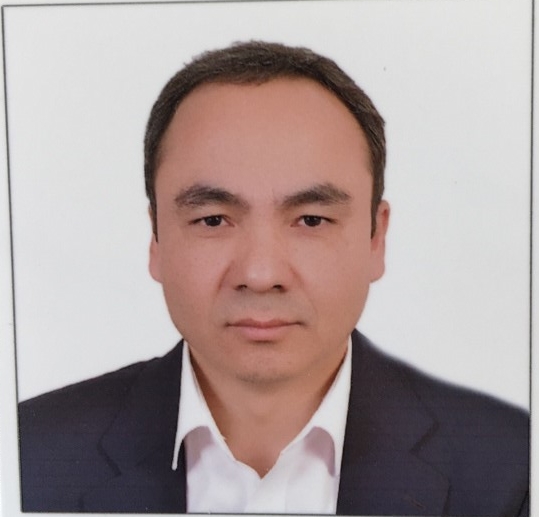Columns
Nepal’s global image
There is no logic that resource-rich Nepal should remain at a lower rung of the development ladder indefinitely.
Yagya Bahadur Hamal
Like any other country, Nepal’s global image is shaped by its internal situation and external behaviour. Internally, Nepal’s independent and sovereign identity throughout history, outstanding natural beauty, richness in natural and human resources, famous world heritage sites like Sagarmatha (Mount Everest), Pashupatinath and Lumbini, cultural and ecological diversity, and friendly people all add to its glory. Out of more than two hundred countries globally, it enjoys medium-sized status as the 95th largest country in terms of geography, 49th most populous country and 97th largest economy. On the flip side, it also faces the challenges of poverty, underdevelopment and below-average global rankings in some sectors. Externally, Nepal’s friendly relations with all countries, the longstanding policy of non-alignment, active role in regional and multilateral forums, and contribution to global peace-making through the United Nations have secured it a respectable place among the comity of nations.
Domestic strength
Boosting the nation’s image primarily rests on building robust domestic capacity. In his book The Changing Politics of Foreign Policy, American ambassador and Professor Mr Christopher Hill writes, “Foreign policy is not immune from the impact of the country’s values, ideas, initiatives and upheavals”.
A host of activities are required for internal capacity enhancement. The first and foremost is preserving the nation’s independent identity without allowing any space for external interference. Ensuring political and policy stability is also essential, along with the maintenance of peace and security.
Likewise, higher economic growth rates, expansion of the economy, rise in per capita income (from US$1,155 in 2020) and reduction of absolute poverty (from 16.67 percent in 2019-20) are essential for raising the country’s economic status and global profile. It is also high time to enhance the production and export of goods and services of high quality to reverse the alarming trade deficit (of Rs863.21 billion in 2020-21) and gain from international trade.
There is a glaring need to stop the continuous exodus of youth seeking foreign employment. The authorities must create sufficient jobs for the youth at home and find ways to boost the country’s economy. The experience of the developed countries can be a good guide for introducing a policy of offering higher pay for the best brain of the country to retrain the brain and stop brain drain for qualitative changes.
Nepal’s beauty, a bounty of nature, will remain a great attraction for visitors worldwide only if there is no distortion and damage to it by man-made structures.
Since a country’s strength is reflected in its capacity to give others than receive from them, Nepal’s heavy dependence on foreign aid (of Nepali Rupees 109 billion in 2019-20) should be reduced and limited only to its vital sectors. Moreover, it would be wise if Nepal could also reciprocate the donors, at least symbolically. There is no logic that resource-rich Nepal should remain at a lower rung of the development ladder indefinitely. Optimum utilisation of the existing resources is, thus, a must for the overall development of the country and the prosperity of its citizens, which will also uplift its status globally.
Likewise, setting up the best educational institutions will retain Nepali students who fly abroad for better higher education and better jobs and attract students from other countries, raising national honour. So do the best health institutions and health care and security system, reliable and safe air services, qualitative road transport and effective communication networks.
Nepal’s image as a democratic, transparent, accountable, and law-governed country should be enhanced along with its citizens’ fundamental human rights and freedom. The country has to work hard to improve its position in various global rankings. Nepal currently ranks 94th out of 190 countries in doing business environment, 142nd out of 189 in the human development sector, 117th least-corrupt country out of one hundred and seventy-nine. Though Nepal is poised to graduate from an LDC status by 2026, more work is necessary to attain a higher status in politics, economics, social issues and other areas.
Setting up world-class institutions representing different sectors will raise the nation’s standing globally. Furthermore, ensuring ‘quality’ in every sphere of life will undoubtedly draw the world’s attention and appreciation. There is no denying that peace-building activities, both inside and outside the country, without any space for violence and insecurity, will generate external support and cooperation. The nation should stand for pragmatism and not be over-ambitious.
Foreign policy and diplomacy
Externally, Nepal’s brighter sides need to be adequately projected, publicised and promoted in the world continuously. Here comes the vital role of those involved in statecraft, politics, governance, media and international relations.
Nepal’s foreign policy must show its independent, non-aligned and balanced character without any deviations and distractions, making Nepal near and dear to every country. National interest, not a personal one, should be the overriding factor for such relations. Nepal’s external links must remain productive cushioned on firm domestic ground. It is germane to quote here Mr Hubert H Humphrey, former US Vice President, rightly said, “Foreign policy is really domestic policy with its hats on”.
Diplomacy, an instrument of foreign policy, must remain sharp and catalytic for this country’s image lifting. Everyone working in the foreign ministry and Nepal’s diplomatic and consular missions abroad, who enjoy foreign allowances and various facilities from the state coffer, must produce coveted outcomes against the investment.
Even private institutions and citizens outside government, both in Nepal and abroad, whose knowledge, ideas and attitude also form an image of the country with foreigners, should also play meaningful roles in brightening the country’s image externally while dealing with foreigners at their levels. In a nutshell, Nepal’s global image can be made brighter by making the country internally strong and externally dynamic and performing through the collective efforts of all Nepali citizens, both within and without the government.




 7.12°C Kathmandu
7.12°C Kathmandu













%20(1).jpg&w=300&height=200)

